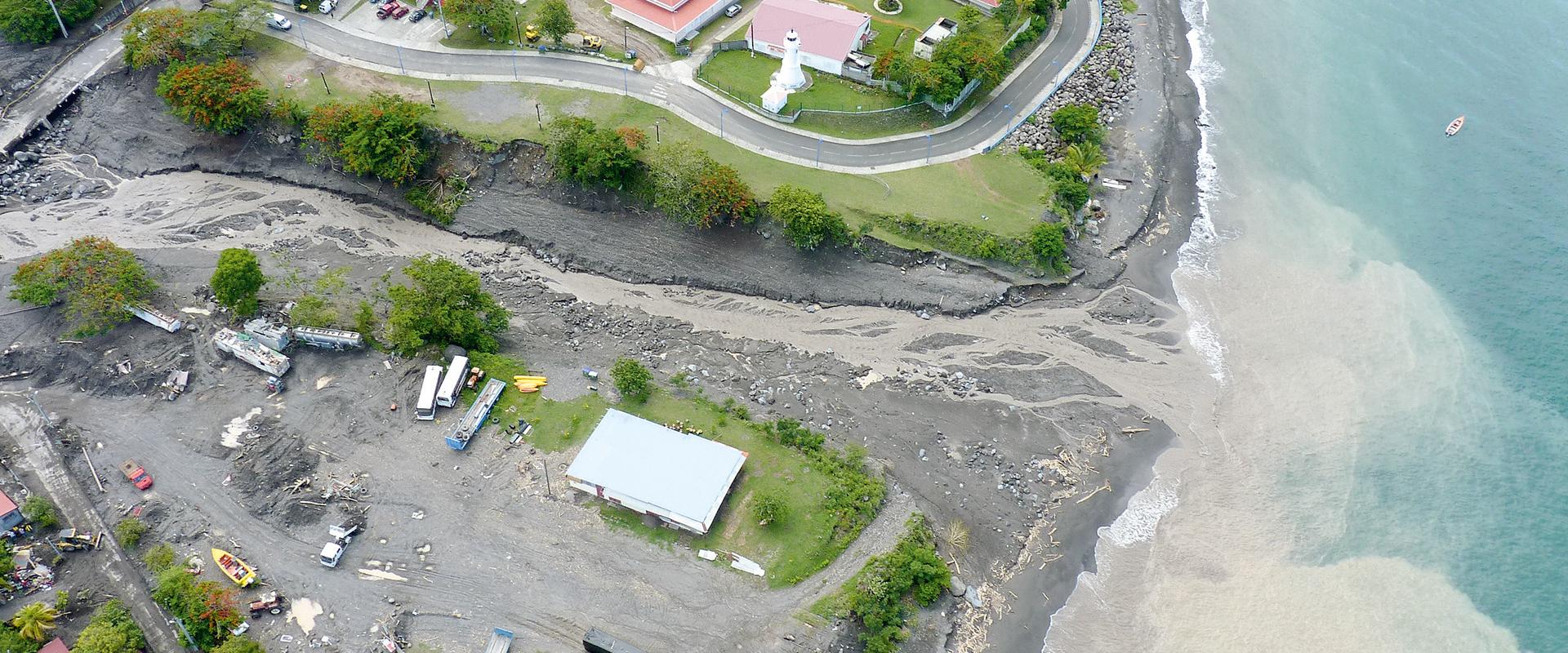Carib-Coast: Caribbean Coastal Risk Prevention Network in relation to climate change
Carib-Coast: preserve one of the last natural saltworks in Guadeloupe
Carib-Coast: current meters deployment off Guadeloupe and Martinique
Transcription
Measuring Campaign CARIB-COAST
We are in the port of Trois-Rivières with an unusual machine. Can you introduce yourself and tell us what it is?
I am André Dolle, an oceanographer from the company Nortek. We specialize in the measure of currents and swell. This is the machine we use. It is a 500 kHz Doppler ultrasound profiler that measures the currents through the water depth. We measure the current from top to bottom at 2-meter intervals. We measure it every 10 minutes, on average. Then we use 2 Hz bursts every 1,800 seconds to measure the swell. We measure the height of the swell with this vertical beam, which works like a reverse sonar. It hits the surface at 2 Hz and we can reconstitute the shape of the surface, and the four inclined beams here, measure the orbital speed of the swell at 2 Hz through the water depth which enables us to characterize the influence of the swell through the water depth. That is the main machine. It is powered by this blue machine, which has an autonomy of two months, and this is a sensor, to measure the inclination. It transmits the angle of inclination by acoustics. We put a modem in the water and obtain the angle of inclination before sending the tripod down. The angle must be 5 degrees in order to obtain valid measures, 10 degrees maximum, but we try to respect 5 degrees. This is the system that recuperates the water. This is an acoustic width to which we transmit an order with this transducer, which releases this black plastic element here. When it is released, the elastic rope unravels, releasing this floater, which has 5 l of buoyancy. Inside, there are 100 m of Kevlar which will rise to the surface, and we can recuperate it.
Out to sea to use ADCP current meters
The deployment, August 17 to 23 in Guadeloupe and August 25 to 31 in Martinique, will be followed by the deployment of 12 GPS buoys on the surface.
Knowledge of the currents and the sea depth off the French Caribbean coast is used to anticipate coastal events.
Please do not interfere with this material.
Should you find any buoys on the beaches, contact Ifremer.








In February 2021, the teams conducted a new measurement campaign on the Grande Anse des Salines beach in Guadeloupe to study hydrodynamics as well as sediment and vegetation dynamics. The teams take a look back at this campaign, which is important both for the preservation of the coastline and for the economic and tourist aspects of the area.